Windows 11 may be a great update over Windows 10 from the design point of view. But things are definitely not great in every department. Users have experienced a lot of trouble with apps crashing.
And Teams Chat is certainly headlining this crash show. If you are also experiencing trouble with Teams Chat in Windows 11, you’re definitely not alone. Scores of users are being plagued by this problem.
Fixing “We’ve Run Into an Issue” or other Teams Chat Errors
Some users are feeling that the Windows 11 update was rushed out. Many apps that worked fine in Windows 10 like the snipping tool and Microsoft Teams are presenting issues in Windows 11.
If you’re unaware, Microsoft integrated Microsoft Teams as a system app with the introduction of Chat in Windows 11. Chat provides a taskbar entry point to a lite version of Microsoft Teams Personal for easier communication. But for many users, the desired effect has been the complete opposite.
Chat – and mostly, Microsoft Teams along with it – would either not open or downright crash after opening for a few seconds. Most users have even found multiple instances of the app running in the system tray, where each instance aligns perfectly with each crash of the app.
Many other users have been faced with the “We’ve Run Into an Issue” error on their Chat or Microsoft Teams app windows.
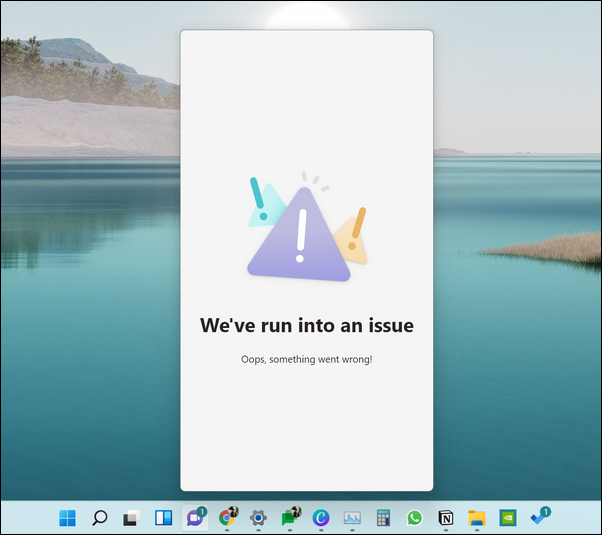
No matter which way things are going for you, it’s equally annoying. The issue even motivated some users to abandon Windows 11 altogether and downgrade to Windows 10. Thankfully, you don’t have to take such drastic measures. There are some fixes you can try to get things up and running like clockwork again.
But before going on to any of the fixes, make sure that there is actually something you can fix. First, make sure that you have no internet connectivity issues. Chat and Microsoft Teams need a working internet connection to work.
Second, make sure that Microsoft Teams is not experiencing an outage. Go to teams.microsoft.com on a web browser. If Teams is working fine online, the problem is certainly with the desktop app. So, go on and try these fixes now.
Restart the App
Not to state the obvious, but it is one of the best fixes for most situations for a reason. Restarting the app can fix any minor glitches and issues that may be caused due to a corrupted file.
Simply go to the system tray and right-click the Microsoft Teams app icon and select ‘Quit’ from the options that appear.
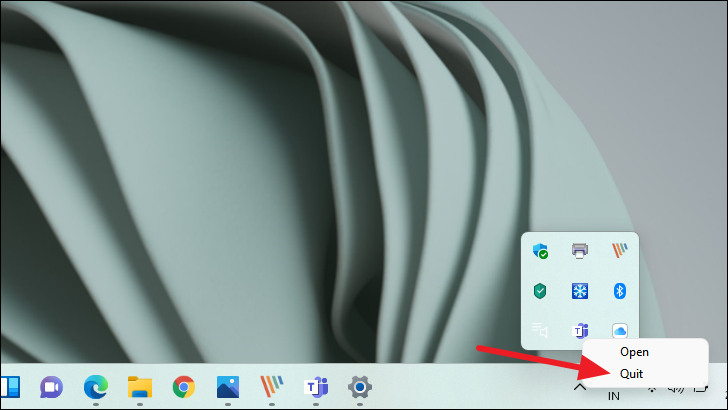
Click the ‘Chat’ icon from the taskbar again.
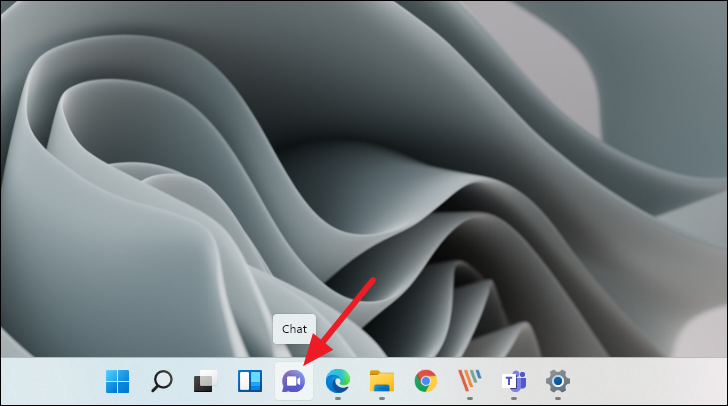
This time, it will take a few more seconds for the Chat app to start as the Teams app won’t already be running in the background. Once the app starts, see if the issue was resolved. Otherwise, move on to other fixes.
Update the App
If Chat is having issues in Windows 11, make sure that the Teams app is updated. The latest updates always have bug fixes. Now, Chat might not be itself an app, but it is an extension of the Teams app. It needs Teams to work smoothly to have a smooth operation itself.
Open the pre-installed Microsoft Teams app in Windows 11. Go to the system tray and right-click the icon for Microsoft Teams. Then, select ‘Open’ from the options. You can also use the search option to open the app.
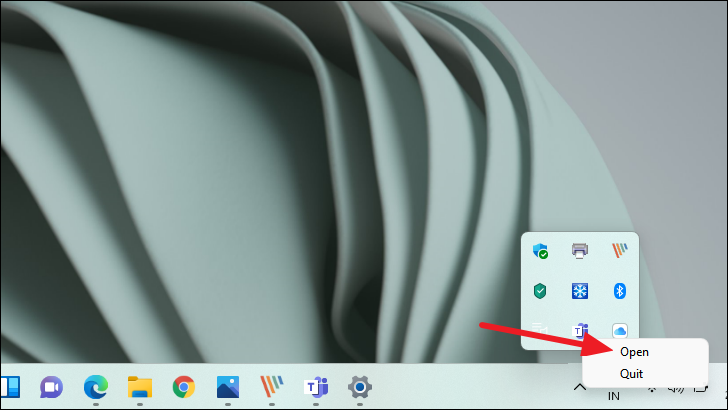
Then, click the ‘Settings and more’ icon (three-dot menu) from the Title Bar.
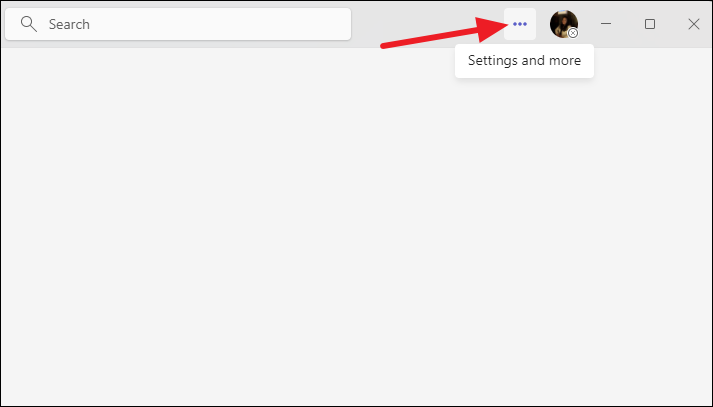
Go to ‘Settings’.
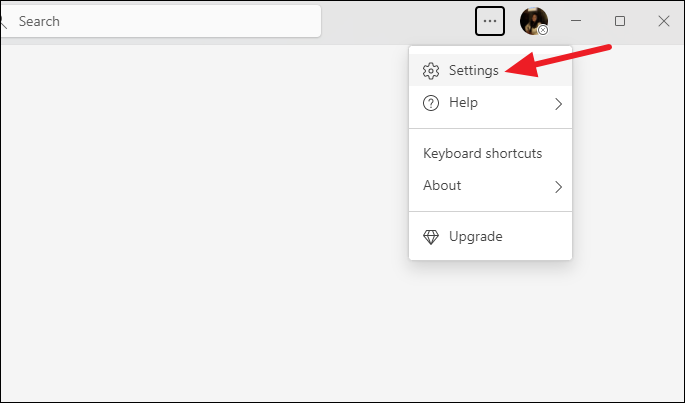
Click the ‘About Teams’ option at the bottom of the left pane in the Settings window.
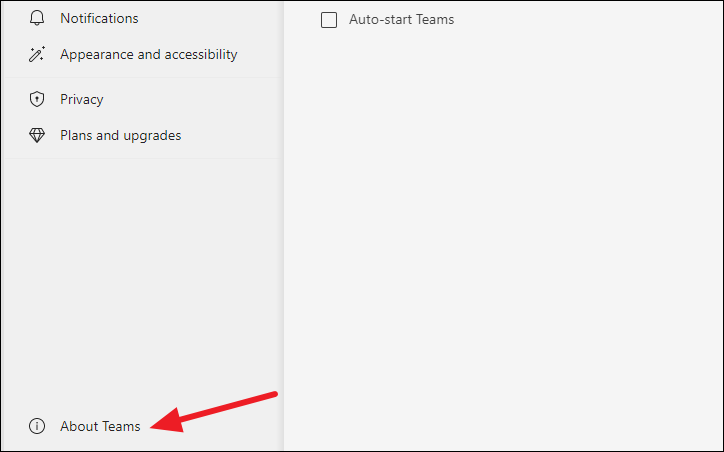
If there is an update pending, it’ll appear underneath the ‘Version’. Update the app and see if the issue goes away.
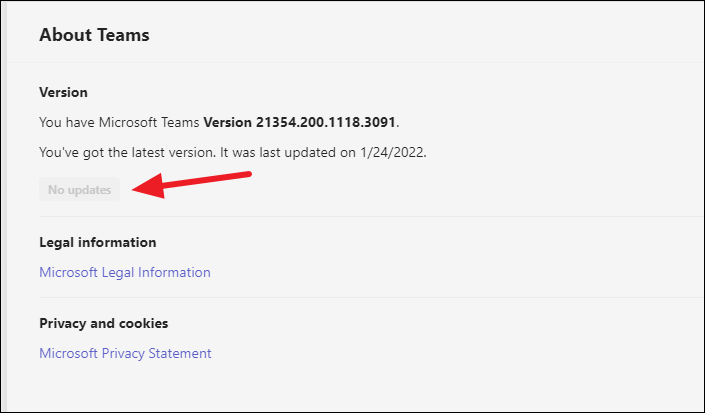
If the issue is not just with the Chat window and the Teams app also won’t open on your system, don’t worry. Try other fixes.
Check for Windows Updates
It’s not always the app that needs to be updated. Windows gets frequent updates and seeing that Windows 11 is still in such an early stage, it’s even more important to install these updates.
Open the Settings app from either the Start menu or using the Windows + i keyboard shortcut.
Then, click the ‘Windows Update’ option from the System settings or go to ‘Windows Update’ from the navigation menu on the left.

Then, click the ‘Check for Updates’ button and install any pending updates, if there. The system will need to restart to install any updates if there are any.
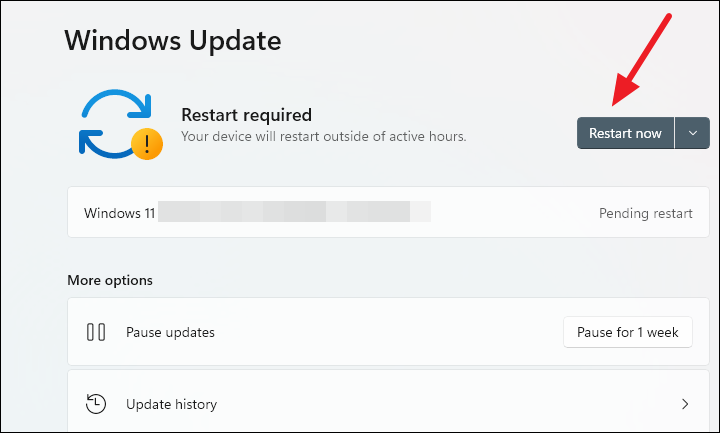
Check Chat once the system restarts. Otherwise, move forward on this list.
Restart the Graphics Driver
Even though it might seem completely unrelated to the issue at hand, disabling and re-enabling the graphics driver has helped many users get rid of the problem.
Right-click the Start button and select ‘Device Manager’ from the menu.
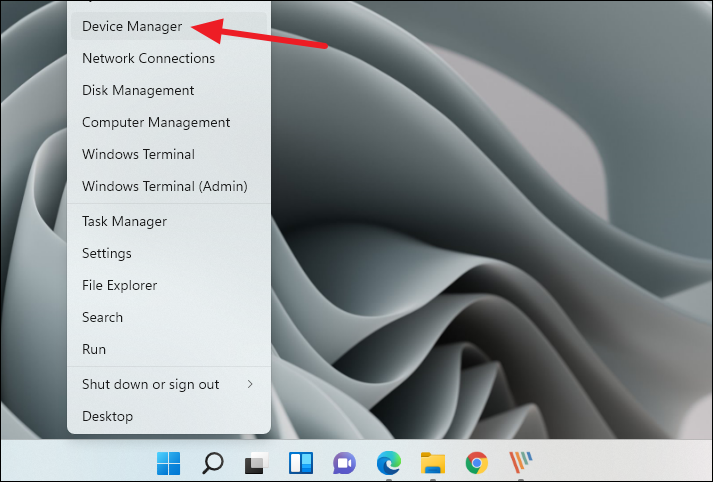
The device manager window will open. Go to ‘Display Adapter’ from the list and click the arrow next to it to expand the options.
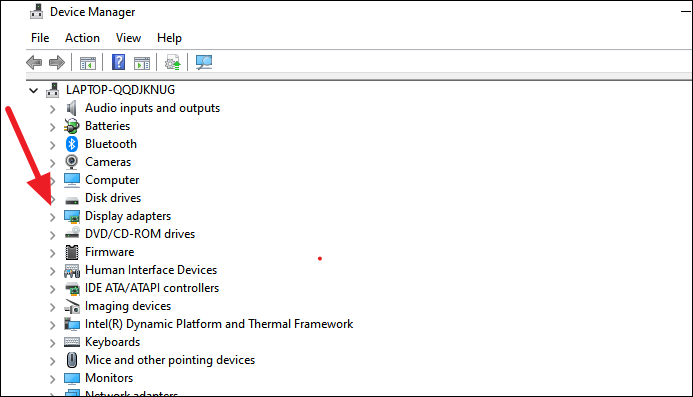
For many users, restarting the Intel Graphics Card helped. But you can try this with other graphics drivers, as well.
Right-click the graphics driver you want to disable and select ‘Disable device’ from the context menu. Confirmation prompts will appear on your screen. Confirm to proceed and disable the driver.
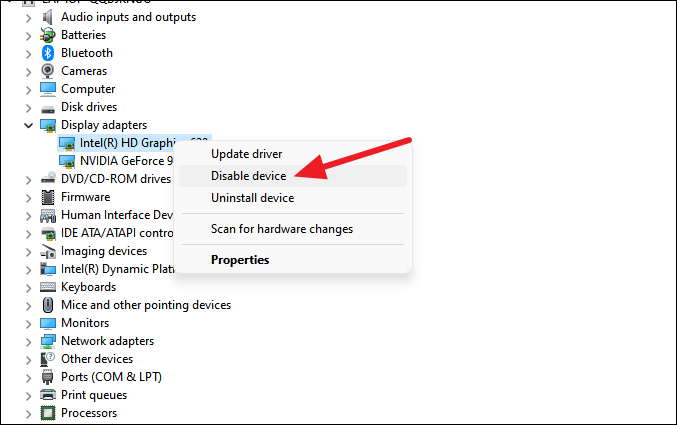
Then, right-click the device again and select ‘Enable device’ from the menu to restart the driver.
Once the graphics driver restarts, see if the issue with Chat is resolved.
Delete the App’s Cache
If none of the above options worked, try deleting the app’s cache. Go to the search option and type %appdata% and open the folder.
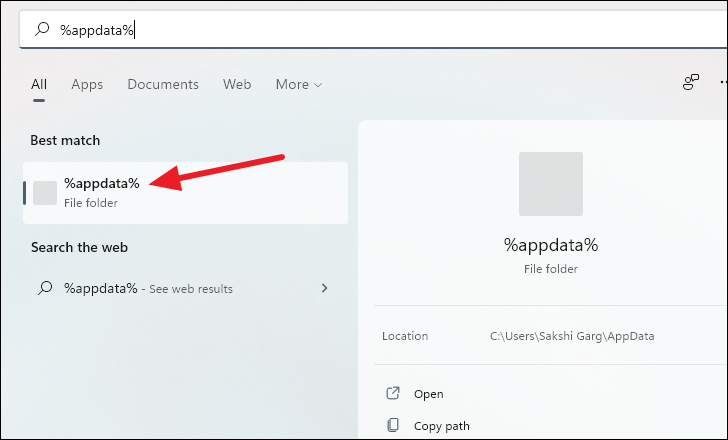
Then, go to the ‘Microsoft’ folder. Further, open the ‘Teams’ folder. You can also open File Explorer and type %appdata%\Microsoft\Teams in the Quick Access toolbar and press Enter.
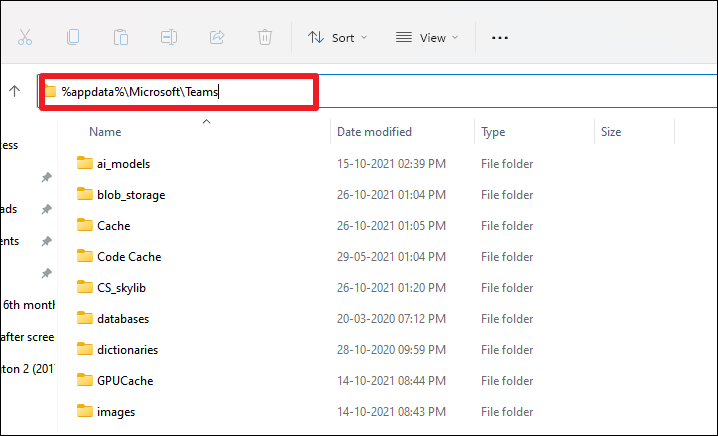
Then, delete the contents of the following folders: ‘blob_storage’, ‘Cache’, ‘databases’, ‘GPU Cache’, ‘Local Storage’, and ‘tmp’.
See if Chat starts working properly after deleting the cache for Teams.
Use the App Troubleshooter
Open the Settings app and stay on ‘System’ from the left pane. Then, scroll down and go to ‘Troubleshoot’.
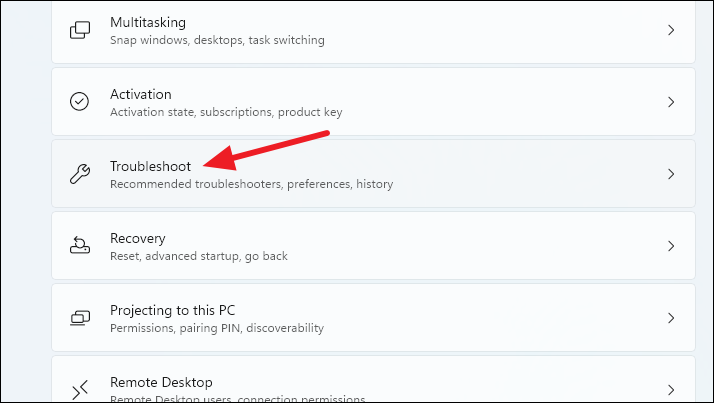
Click the option for ‘Other Troubleshooters’.
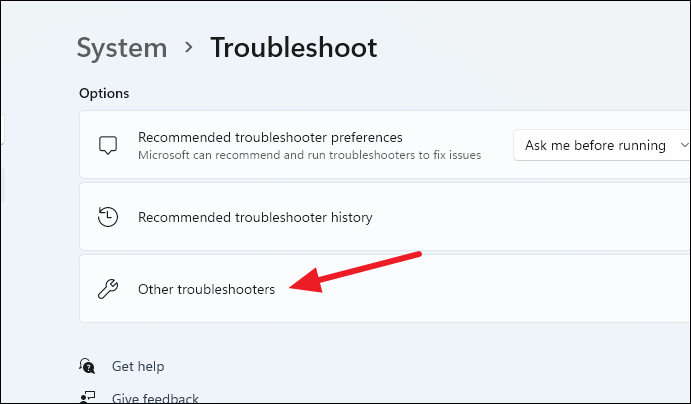
Scroll down in the list of troubleshooters and click ‘Run’ next to ‘Windows Store Apps’.

The dedicated troubleshooter will run. If it finds any problem with the app, it will present solutions for that. Follow the instructions on your screen to effectively troubleshoot. Try running the Chat app now.
Repair and Reset the App
Open Settings and go to ‘Apps’ from the navigation pane on the left.
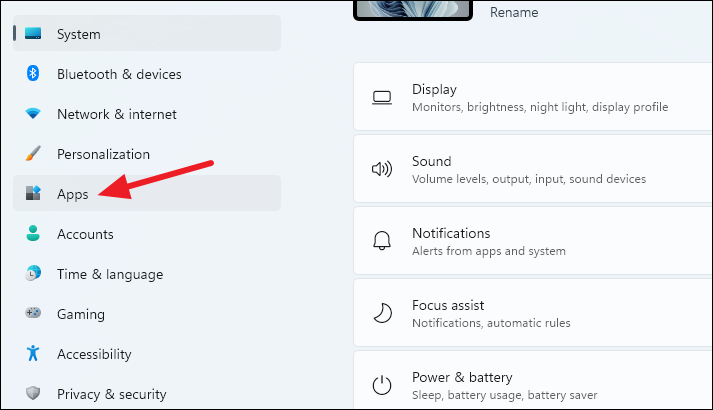
Then, from the right pane, go to ‘Installed Apps’.

Search for ‘Microsoft Teams’ and go to the Teams app that has the white tile beneath the letter T for an icon (if there are two apps on your system). Then, click the ‘three-dot menu’ on the right and select ‘Advanced options’ from the menu.
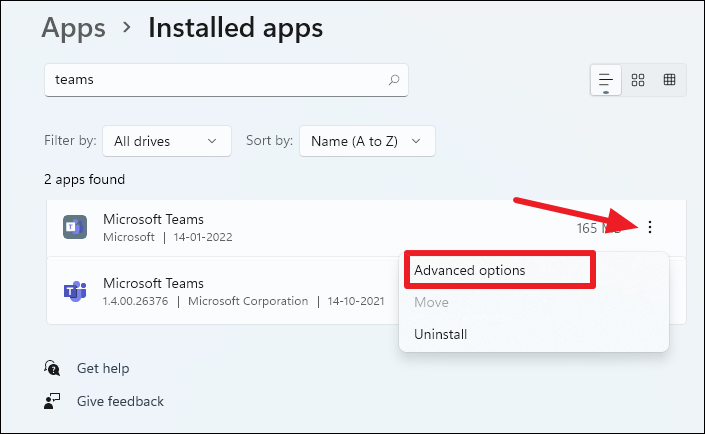
In the advanced options, scroll down until you find the Reset option. It’ll have two further options under it: ‘Repair’ and ‘Reset’.
First, click the option for ‘Repair’. Windows will try to repair the app without affecting any data.
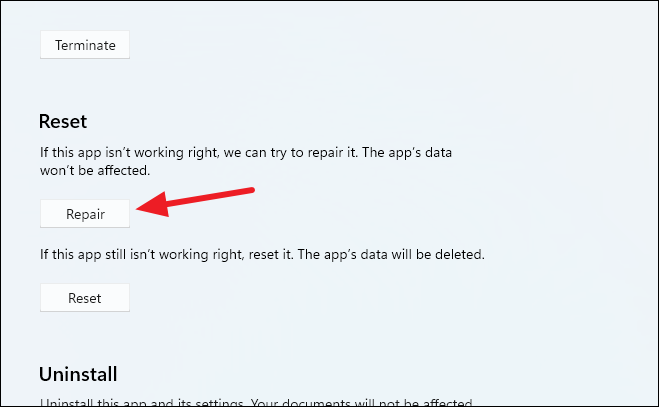
Once the process completes, try opening the app. If it starts working, great! If not, click the option for ‘Reset’. This will reset all the app data and if the problem was some corrupted file, it will get deleted along with the rest of the app data.
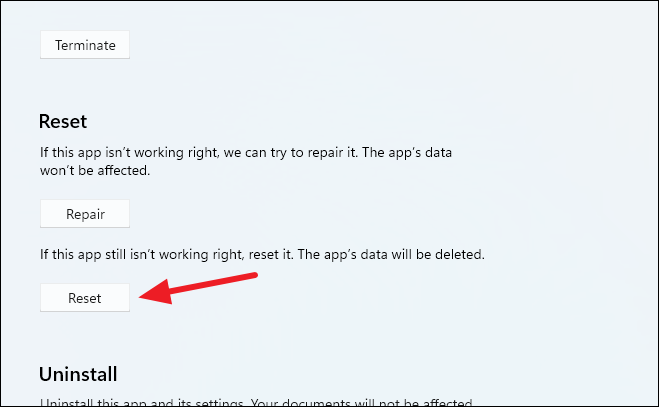
Try opening Chat again. You will have to complete the login process again, but if it starts working properly, it’ll be completely worth it.
Reinstall the App
If nothing else worked, this is the last resort. Go back to the ‘Installed Apps’ section again and find Microsoft Teams. Click the ‘three-dot menu’. But this time, click the option for ‘Uninstall’ from the menu that appears.
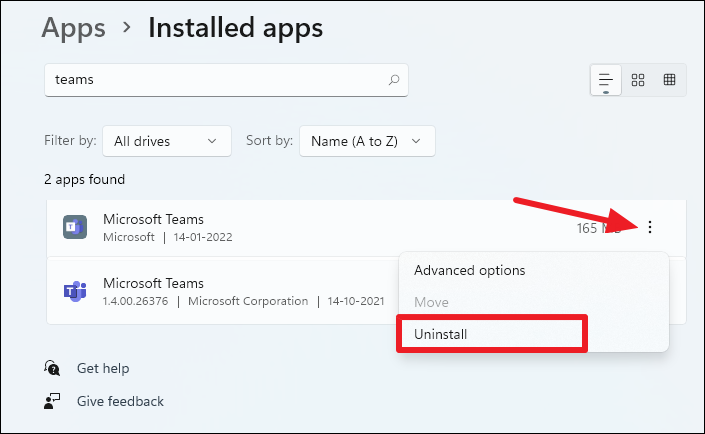
A confirmation prompt will appear, click ‘Uninstall’ to confirm your choice. The app will be uninstalled.

Now to reinstall the app, go to the downloads page for Microsoft Teams.
Scroll down to the Download Microsoft Teams for Windows PC section. Then, click the ‘Download for Windows 11’ button under Download for Home or Small Business.
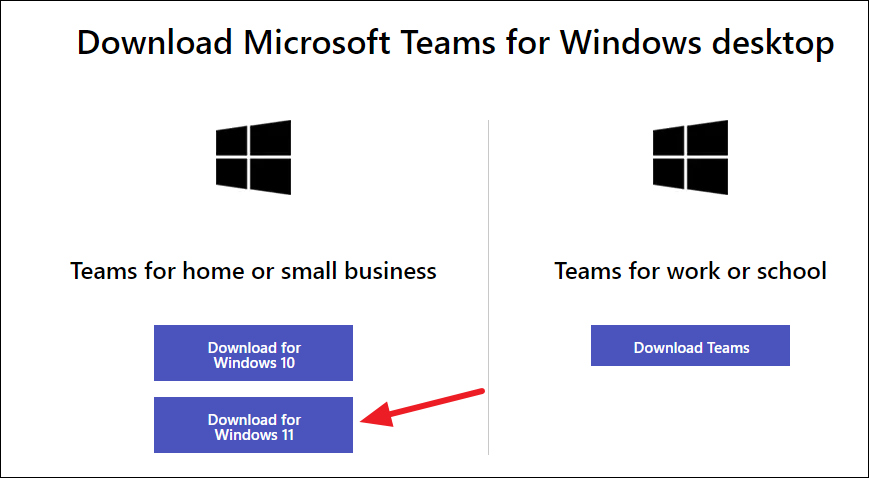
The installer will download. Run it and follow the instructions on the screen to reinstall Microsoft Teams Personal for Windows 11.
One of the above fixes should solve this problem for you. If nothing else, reinstalling the app is the nuclear option that should definitely work. If it still somehow doesn’t, you might want to contact Microsoft support and get help for the issue.










Member discussion